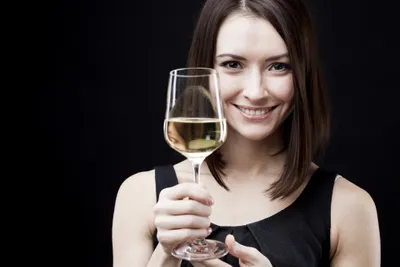It’s funny how you can look up the calories and sugars on the label of almost any product–except for wine! And if you drink wine daily, like me, you’d probably like to know how much calories and sugars you’re ingesting per sip, per glass, or per bottle, right?
We’re looking to the wine experts to find out, which are the best wines for guilt-free drinking….
1. Alcohol vs. Carb Content
When it comes to how wine affects your waistline forget counting carbs. According to the University of Georgia Health Center, it’s the amount of alcohol you’re swilling per glass influences the calories.
That means that carbs really don’t matter much. For instance, most alcohol has 7-calories per gram and only 4-carbohydrates (or sugars) per gram. That means a wine is much denser in calories vs. carbs so a vino with lower-alcohol always has less calories.
2. Consult the ABV
You might not be familiar with the term ABV (or alcohol by volume), but LiveScience.com says this measurement is your best indicator of exactly how many calories you’re sipping back in that expensive glass of chardonnay.
ABV signifies a percentage of alcohol by volume. According to Madeline Puckette, the coauthor of Wine Folly, the essential guide to wine, seeking out a vintage with an ABV that ranges between 9- and 12 percent will mean you’re drinking a wine that contains between 110- and 140-calories per 6-ounce glass.
3. Pass on the Bubbly
Sure, a flute of champagne signifies celebration. There can’t be many calories in the light, bubbly alcohol, right? Not so, says Livestrong.com. Despite the effervescence of champagne or Italian prosecco, this drink can harbor a ton of added sugar.
Wine experts recommend popping the cork on a Brut champers instead. Look to labels with a “brut zero” or “brute nature” marking, which tells you it’s naturally dry without a lot of extra sugar.
4. Pass on the Prosecco
I know I’m guilty of sipping on prosecco, a bubbly beverage produced in Italy, over champagne because I favor the sweet, light taste and lower price tag.
However, Livestrong claims that these “sparkling” wines most often harbor added sugar to create that bubbly affect. For instance, the average 6-ounce pour of prosecco adds up to 175-calories!
5. White vs. Red Vintages
When it comes to heart health, red wine seems to get all the glory. However, when it comes to the lighter vintage, white wine is the “clear” winner. Overall, wine experts attest that white wines are lower in ABV percentage (and calories) compared to reds.
On average, a light white wine, like pinot grigio will pour out at 140-calories per 6-ounce glass. The same amount of red pinot noir means you’re swilling about 200-calories.
6. The Lightest White Wines
Wine Folly recommends uncorking a pinot grigio or Riesling white wine to ensure you have the lowest ABV percentage (and calories) per glass vs. a glass of Chardonnay, moscato, or sauvignon blanc. Overall, European vintages also tend to contain less sugar.
That means a white Riesling from Germany or France will most often always contain less added sugar than the same grape variety from Australia, Canada, or the U.S., where there are laxer laws on adding sugar to wine and where grapes tend to contain higher sugar content, and an overall higher ABV. And skip the so-called Skinny Wines, according to a Huffington Post article that claims it just encourages the tendency to drink more.









